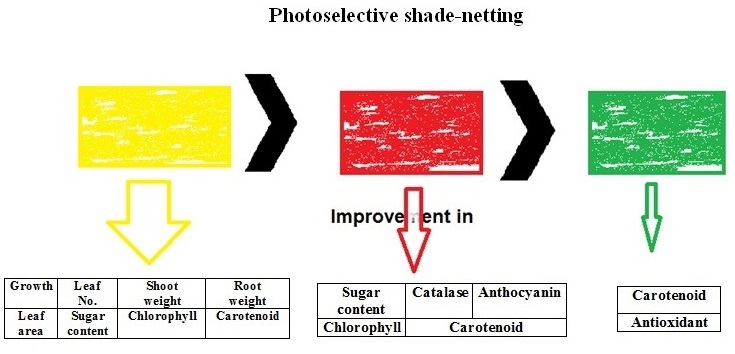The effect of different colored netting on quantitative and qualitative traits of two foliage plant species (Codiaeum variegatum and Aglaonema commutatum)

Published 2020-02-28
Keywords
- anthocyanin,
- brix,
- croton,
- photoselective,
- yellow netting
How to Cite
Abstract
Photoselective netting is a new group of colored netting developing in the past few decades. The effect of colored (red, green, and yellow) netting was studied on physiological traits of Codiaeum and Aglaonema in a trial in Flowers and Ornamental Plants Research Station of Lahijan, north of Iran. The trial was based on a split-plot experiment with two factors. The first factor was devoted to colored netting at four levels (no netting, green, yellow, and red) and the second factor was devoted to plant species at two levels of Codiaeum and Aglaonema based on a randomized complete block design with three replications. The results showed the positive effect of yellow netting on improving the vegetative capability of the plants, so that the highest plant height, shoot and root fresh and dry weight, and leaf area were observed in the plants grown under the yellow netting. Also, the highest anthocyanin, carotenoid contents, and catalase activity were obtained from the red netting and the highest Brix° and total chlorophyll from the red and yellow netting. According to the results, the highest vegetative growth rate was related to Codiaeum. The application of the colored nets provided the plants with more optimal growth conditions.





